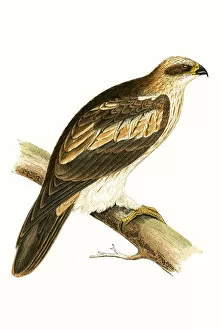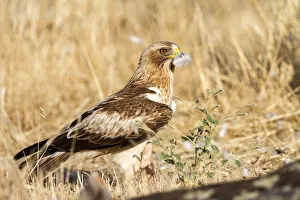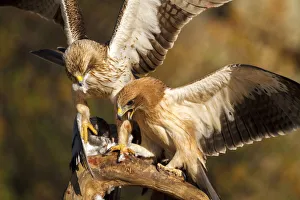Aquila Pennata Collection
The Booted Eagle, scientifically known as Aquila pennata or Hieraaetus pennatus, is a magnificent bird of prey that can be found in various regions of Europe
All Professionally Made to Order for Quick Shipping
The Booted Eagle, scientifically known as Aquila pennata or Hieraaetus pennatus, is a magnificent bird of prey that can be found in various regions of Europe. This captivating illustration from Charles Robert Bree's "A History of the Birds of Europe Not Observed in the British Isles, " published in 1867, showcases the beauty and grace of this species. In Castile and Leon, Spain, both juvenile and female Booted Eagles can be spotted soaring through the skies. Their distinctive plumage sets them apart from other raptors in the area. The juveniles exhibit a striking pattern with dark brown feathers on their upperparts and lighter underparts adorned with white streaks. As they mature into females, their appearance becomes more refined with a mix of brown hues and intricate markings. These young eagles are often seen honing their flying skills above Castile and Leon's picturesque landscapes. With each graceful swoop and agile turn, they demonstrate their natural prowess as skilled hunters. Their keen eyesight allows them to spot small mammals like rabbits or rodents scurrying below. As these juveniles grow older, they will develop strong wings capable of carrying them across vast distances during migration periods, and is during these journeys that they may encounter fellow Booted Eagles along their path—a sight that truly exemplifies nature's wonder. The presence of Booted Eagles enriches the biodiversity within Castile and Leon's ecosystem while also serving as an indicator for its overall health. Conservation efforts must continue to protect these majestic creatures so future generations can witness firsthand their awe-inspiring flights through Spain's azure skies. Hieraaetus pennatus—truly a symbol of strength, elegance, and untamed freedom that captivates all who have the privilege to observe it in its natural habitat.



